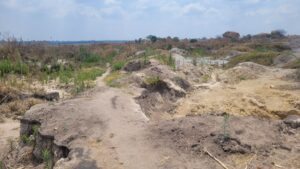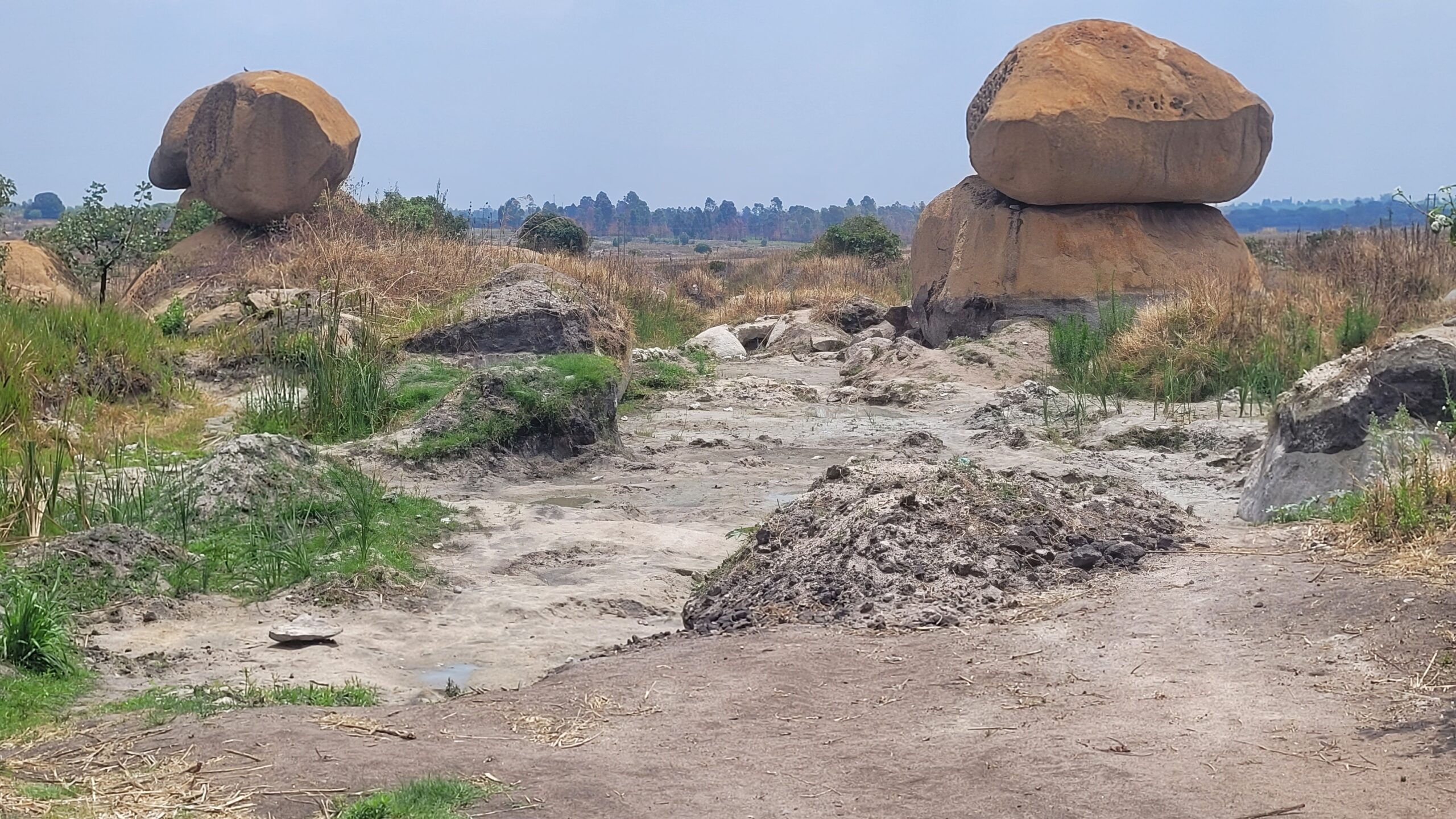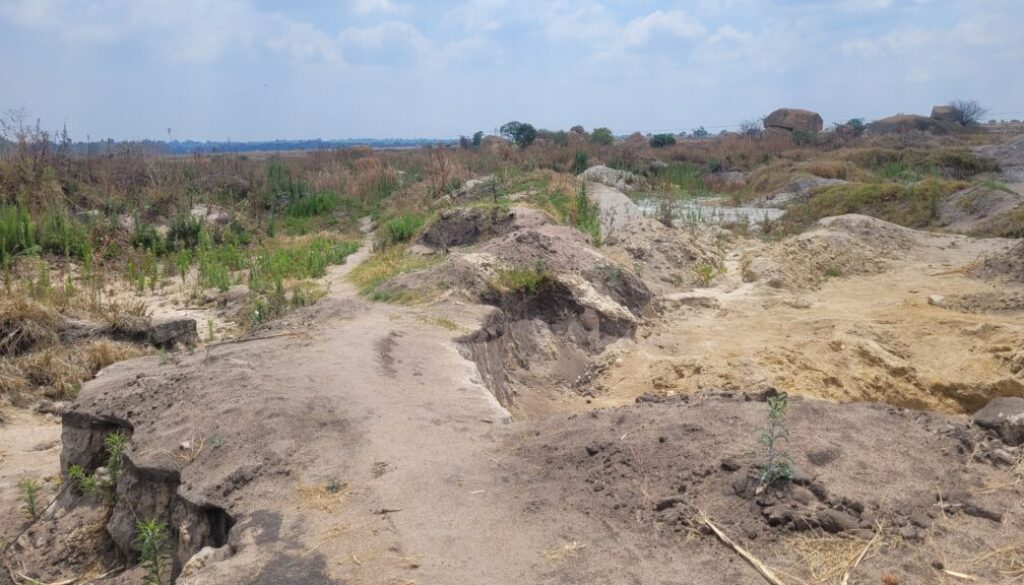Ramsar COP 15: Calls grow louder for authorities to save Cleveland Dam
Edgar Gweshe
Cleveland Dam is an internationally designated wetland and key biodiversity area under the Ramsar Convention on the protection of wetlands which Zimbabwe signed in 2011.
It covers an area of 2 500 hectares and was designated as an internationally recognised wetland in May 2013.

Despite Cleveland Dam being an internationally recognised wetland that is also protected under Zimbabwe’s laws, the area has of late been under constant threat from sand miners, land barons and pollution.
Stakeholders including Birdlife Zimbabwe, the Harare Wetlands Trust (HWT) and Cleveland Action Alliance Trust (CAAT) continue to make concerted efforts to save Cleveland Dam from further destruction. However, degradation of the wetland continues (apparently) unabated and this has raised the concern of Mabvuku residents under the banner of CAAT.
The organisation has petitioned various duty bearers including the Environmental Management Agency (EMA), the City of Harare and the Zimbabwe Republic Police (ZRP) to act and stop the sand miners at Cleveland Dam.
The Mabvuku residents are however irked by the continued sand mining activities at Cleveland Dam. Some of the sand miners operate right in front of Mabvuku Police Station.
Last year, the ZRP had assured the CAAT of action against the sand miners.
“As Cleveland Action Alliance Trust we are deeply concerned by the adamancy by sand miners on the Cleveland Dam wetland area despite numerous efforts to have the illegal act stopped .Our engagements and interventions seem to be fruitless as it is business as usual for the sand miners .Cleveland Dam is one of the seven internationally recognized wetlands in Zimbabwe under the Ramsar Convention .The continued degradation of the wetland by sand miners is a clear indication that the Ramsar Convention is being violated .Zimbabwe is a signatory to the Ramsar Convention and as such there is need to for us as a nation to respect international treaties,” said CAAT Chairperson Jimmy Mahachi.
He said that residents and stakeholders are getting threats from the sand miners who claim that they are politically connected and are immune to prosecution .
As part of their recommendations, CAAT implored the ZRP to patrol the area on a 24-hour basis and called upon EMA to impose stiffer penalties which include custodial sentences.
Birdlife Zimbabwe and the Harare Wetlands Trust on Thursday organised a media tour to Cleveland Dam as part of efforts to raise awareness on wetlands degradation in Harare while pushing for responsiveness on the part of duty bearers.
During the tour, the media had an appreciation of the level of degradation taking place at Cleveland Dam.
Officials from EMA, City of Harare and Upper Manyame Sub-catchment Council were also part of this tour.
Addressing delegates present at the tour, Mahachi reiterated the need for an all stakeholders approach in protecting Cleveland Dam and other wetlands across Harare.
“The continued destruction of wetlands in Harare will spell doom for our city. Wetlands serve as important water sources and already, Harare is experiencing a dire water crisis and we are appealing for urgent action to save our wetlands in the city. In the case of Cleveland Dam, we are more concerned that this is an internationally recognised wetland yet it is under constant threat. We call upon authorities to act and save this international site,” said Mahachi.
In an interview, EMA Provincial Environmental Manager, Leon Mutungamiri said they were liaising with other stakeholders to get rid of the sand miners at Cleveland Dam.
“We are conducting raids with the police and have managed to make some arrests. Our target is to ensure that we remove the sand miners completely,” said Mutungamiri.
During the tour, an official from EMA, Batsirai Sibanda noted that the agency was proposing the establishment of environmental safeguards and a waste collection centre at Cleveland Dam.
An official from the City of Harare Environmental Management Unit, Naison Chenjerai expressed concern over the continued degradation of wetlands in Harare.
“As the City of Harare, we value the role of wetlands for the city and we are concerned with how human activities continue to lead to the degradation of our wetlands. We shall continue to work with other stakeholders to ensure that we protect these wetlands which are critical for the sustainable development of our city,” said Chenjerai.
Legislation that provides for wetlands protection in Zimbabwe include the Environmental Management Act (Chap 20;27), Statutory Instrument 7 of 2007 on Environmental Management (Environmental Impact Assessment and Ecosystems Protection) Regulations and the Government Gazette 380 of 2013.
According to the Environmental Management Agency (EMA), 82% of the country’s wetlands are moderately to severely degraded, with only 18% remaining in a relatively undisturbed state (Zimbabwe National Wetlands Policy, 2022). Harare has seen a dramatic loss of 50% of its wetlands over the last two decades, and without urgent action, the city risks losing the remaining wetlands in the coming few years.
The Harare Wetlands Trust is concerned that the continued degradation of wetlands in Harare will negatively affect the sustainable development of the city.
“The ongoing degradation of wetlands has severe implications for the City of Harare’s future development, particularly in the quest for climate smart cities. The loss of wetlands threatens to worsen the already critical water shortages driven by rapid population growth and urban development, which in turn places immense pressure on existing water resources. Wetlands play a critical role in water purification, flood control, and sustaining biodiversity, all of which are essential for the well-being of urban populations,” said HWT Programmes Manager Selection Chari.
Zimbabwe is set to host the Ramsar Convention’s 15th Conference of Parties (COP 15) in July 2025 and Chari said the event provides an opportunity to advance commitments on wetlands protection.
“In July 2025, Zimbabwe will be hosting the Ramsar Convention’s 15th Conference of Parties (COP 15) in Victoria Falls. This high-profile event offers a pivotal opportunity to advance both national and regional commitments to wetlands and biodiversity conservation. The timing is also aligned with the United Nations’ Decade on Ecosystem Restoration (2021-2030), which calls for urgent efforts to restore degraded ecosystems and protect those that are under threat.
Improved management and protection of wetlands are essential to ensuring healthy ecosystems that can provide clean water, support biodiversity and contribute to national development goals. Wetland conservation directly supports the objectives of Zimbabwe’s National Development Strategy 1 (NDS1), including the attainment of national biodiversity and livelihood objectives. Furthermore, it aligns with global targets under the Kunming-Montreal Global Biodiversity Framework, the Sustainable Development Goals (SDGs) and the climate action goals by enhancing carbon capture, local climate regulation and resilience to climate change,” said Chari.
Harare has three Ramsar designated wetlands namely Cleveland Dam, Lake Chivero and Monavale Vlei.
The country has four other Ramsar designated wetlands which are Chinhoyi Caves Recreational Park, Victoria Falls National Park, Driefontein Grasslands and Mana Pools National Park.
The Network for Environmental and Climate Justice has made calls for the government to put in place stricter measures to ensure wetlands protection in Harare.
“By virtue of Zimbabwe being a signatory to the Ramsar Convention on the Protection of Wetlands, there is a compelling need for the government to put in place strict measures to protect wetlands as important water sources that are critical for human well-being and serve as special habitats for several forms of plants, birds and animals. Wetlands also play a crucial role in climate change mitigation.
As the City of Harare is in the process of updating its Master Plan, we recommend that an updated Masterplan for Harare must appreciate the fact that the future sustainability of the capital is dependent on wetlands preservation and environmental sustainability. Harare’s outdated Masterplan makes little reference to wetlands and their invaluable services for the City of Harare. This has paved the way for chaotic land allocations (including on wetlands) which often disregard environmental sustainability,” said the NECJ.
The organisation noted that development and implementation of Local Environmental Action Plans (LEAPs) as stipulated by the Environmental Management Act is also critical for the protection of wetlands.
The picture collage below shows the level of degradation at Cleveland Dam as a result of sand mining;








